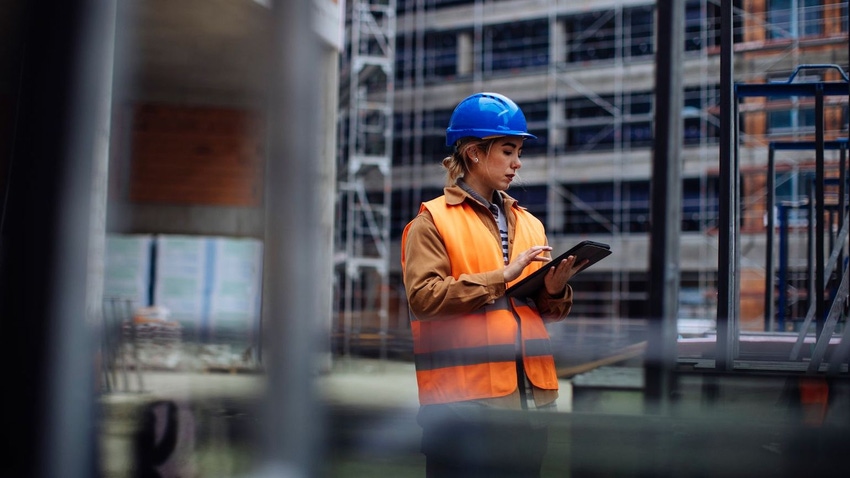How Jobsite Safety Can Help Keep a Construction Business in Business
The goal is to ensure your people go home uninjured, but safety protocols also can have a positive impact on your company’s bottom line.
September 8, 2023

Christina Donovan, vice president and corporate safety director at a Dunkirk, New York-based construction company, kicked off her session at the IRE construction show earlier this year with a sobering reminder: “Safety has always been important, but as we know … it hasn’t always been recognized either by the industry or by owners or general contractors until more recently.”
For anyone in the industry still lagging in making safety a central operating component of their business, Donovan and her colleague Lorie Mets offered a compelling reason to refocus: Along with protecting workers, safety can help protect the company and the bottom line.
“We’ve seen a huge growth in the need for safety, the want for safety, both from a company perspective and also from general contractors and owners,” Donovan said. “So we’ve found that safety is a key component in keeping your company sustainable and competitive.”
In their presentation, “Safety for Sustainability,” Donovan and Mets presented the case for considering how a safety culture and formal safety programs make business sense as much as personal sense.
“Sustainability by definition is the ability to last or continue for a long period of time, or the ability to be maintained at a certain rate or level,” Donovan said. “Sustainability of a company … is the result of the environment, the culture of a company and people within the company working together toward a common goal.”
A sustainable business requires three components: safety, quality and production. “For us, it’s in that order,” Donovan explained. “We have no business being on a roof if we’re not working safely, and we have no business being on a roof if we’re not providing a quality product.”
The Business Case for Safety
The common goal for nearly every company is to make a profit. Making safety a foundational value and a priority can play a role in that profit in both direct and indirect ways.
Safety is important for your customer relationships. Customers don’t want liability. “They want to ensure you are doing a safe job and a good job for them,” Donovan said.
“We want to survive and thrive in an ever-growing and changing safety environment,” Donovan added, “and we also want to make sure that our customers … know who we are and what our mission is as far as safety goes.”
The visible and less visible costs of an injury. The more visible and immediate costs of an incident may include medical bills, workers’ compensation claims, other legal claims, repairing affected equipment, etc. The more hidden costs of an injury potentially come from halted production, training an employee’s temporary replacement, providing leave and temporary reassignments to an injured employee, among others.
“Our people are our best resources on a jobsite,” Donovan said. “So when we talk about sustainability and safety, they both are about people. Safety keeps our employees on the job which therefore keeps our jobs moving.”
If there’s a bad accident, projects may get shut down for investigations, which not only impacts your bottom line but could also affect the quality of the job if the roof is in an unprotected state at the time.
A news-making incident or a high incident rate also can create a negative impression for your company in the community, which may influence potential customers’ desire to hire you.
Safety can play a role in qualifications and bids. Safety requirements for qualifications and bids continue to grow, so being able to provide documentation of a safety program that is vibrant and interactive is huge.
Good safety numbers also equal more bid opportunities, Donovan said, and, all things being equal, could be the tipping point for your company being chosen for a project.
In addition, some projects may require a certain Recordable Injury Rate, and companies can be shut out if their number is too high. High Experience Modification Rates also can lead to exclusion from the bid process because it communicates potential risk to a customer.
Insurance costs. Experience Modification Rates can directly affect insurance premiums, so having a good safety program may have an impact. The speaker's company, for example, is 0.69 (the industry benchmark is 1.0), which Donovan said resulted in a reduction of the company’s premiums last year.
Translating Safety Into Marketing
Along with the benefits outlined above, companies can leverage a robust safety program for marketing purposes, both internal and external, as a way to boost brand reputation and increase positive conversation. “Create a brand that is synonymous with safety,” Mets said.
“You don’t necessarily need to spend big dollars for big impact,” she noted. “Effective communication is going to get you way further than big dollars and flashy signs.”
She recommended a number of ways to leverage your safety program and news through direct and indirect marketing:
Get employees involved. Ask employees what they think safety is, what they think it should look like, and what things the company should be doing for it. Rally the team around the safety flag.
Not only can this help improve actual safety numbers, you might find people want to be involved. “At the end of the day, all your employees have the same common goal: Get home safely to their families. So if you can find a nice common root, people are more likely to buy into it,” Mets said.
Seek out safety ambassadors within your team, those who want the company to be a better place.
“The important thing is that we’re marketing our safety not only to customers but also to our employees and to prospective employees,” Donovan said. “People want to come work for a company that’s going to keep them safe.”
Create a bond of ownership. Create a tagline that makes an impact, Mets advised. For example, [DJ1] “Safety is our priority, … quality is our promise.”
A tagline should be short and sweet, and you should put it on everything, from your logo to employee swag to email signatures. Anywhere someone looks they should see you, and they should automatically associate you with a safe and strong company.
Most importantly, Mets said, “Show that you live by it—make safety a part of your brand.”
Engage on social media. Anytime something good happens at the company, share it. “We live in a virtual world, and word of mouth is not as good as social media,” Mets said. The more you can put on social media about your company, your experiences, your safety protocol and your employee involvement, the more relevant you become.
Create content. Similarly, cover safety in all areas of your company’s marketing content. Promote safety awards the business or an employee has won in a customer email newsletter and to the local press. Have an employee write a guest blog about learned experiences or safety tips. Seek out safety-specific testimonials from customers.
Educate the community. Community involvement—whether sponsoring a local softball team or helping Habitat for Humanity—is a crucial component of many construction companies’ cultural and/or marketing strategies. Safety can be a part of it too. Along with educating employees about job-specific safety, talk to community and youth groups about things like fireworks safety, heat safety, etc. This helps further your reputation for having a culture of safety.
A Worthy Investment
As a company, there’s no greater importance than keeping your employees—your most valuable resource—safe and healthy. But the additional business sustainability benefits also cannot be denied.
People say safety has too much upfront cost, but “it can either cost you money on the front end or on the back end,” Donovan said. “We always want to make sure that when we’re talking about a safety program, we’re looking at the cost upfront as being an investment in ensuring that we don’t have the costs on the back end.”
About the Author(s)
You May Also Like




